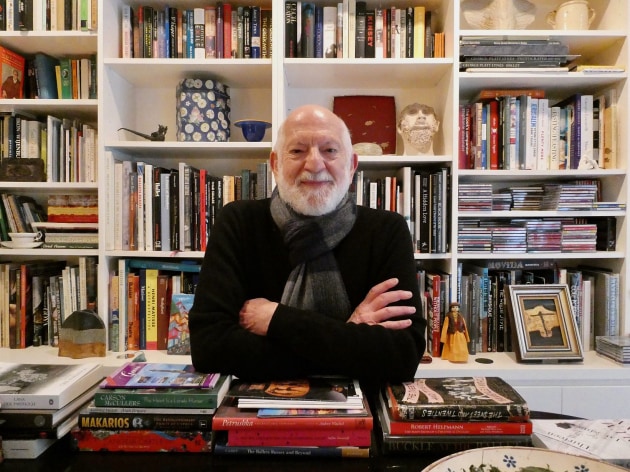Lee Christofis's dance icons
Dance writer and critic Lee Christofis was made a Member of the General Division (AM) "for significant service to the performing arts, particularly to dance" in this year's Queen's Birthday Honours. To mark his achievement, 'Dance Australia' asked him the impossible: to nominate some highlights of his 60 years of watching dance (in 800 words). After much narrowing down and rewrites, he provided this list below.
My love of ballet emerged watching the Borovansky Ballet, the Australian Ballet and the Royal Ballet between 1960 and 1963. Aged 12, I wagged school to see my first Giselle at Her Majesty’s Theatre, and Paul Grinwis’s one-act drama The Eternal Lovers, where Love and Death fight for the souls of Romeo and Juliet. Later I saw Grinwis dance Vaslav Nijinsky’s Afternoon of a faun in the intimate Lisner Academy Theatre.
Soon I was overwhelmed by Margot Fonteyn and Royal Ballet colleagues dancing Frederick Ashton’s pure abstract ballet, Symphonic Variations — clear in theme and structure, an exquisite synthesis with Cesar Frank’s music and Sophie Fedorovitch's design. I found these qualities in George Balanchine’s Serenade too, rising magically through Tchaikovsky’s score. During forensic conversations about these and other ballets with Queensland Ballet founder, Charles Lisner, I learned as both dancer and viewer to find purpose in each aspect of a choreography; without it, many ballets faded away. This idea grew when performing in two of Lisner’s compelling dramas, The Utopians and Oedipus Rex, and watching every ballet I could find.
Today Giselle remains my 19th century icon (in several versions) before Peggy van Praagh’s Swan Lake, Bournonville’s La Sylphide and Nureyev’s versions of Petipa’s Don Quixote and Raymonda. My Ballets Russes icons are Fokine’s Petrouchka, Nijinsky’s Rite of Spring, his sister Bronislava's Les Noces, Balanchine’s Apollo and Léonide Massine’s Les Présages. I include Pina Bausch’s Rite of Spring here as it superbly reflects Nijinsky’s intentions, as does Stephen Page’s Rites, through its Indigenous symbolism.
More Ashton works, Cinderella, The Dream, and A Month in the Country, revealed his narrative genius. Today, Christopher Wheeldon’s superb creation, The Winter’s Tale, follows admirably in Ashton's footsteps. In America Balanchine explored many forms; while his Nutcracker maintained tradition, his sharp, modernist work, Agon, raised the critical bar. So did Jerome Robbins’s Dances at a Gathering and The Concert, while Glen Tetley and William Forsythe, based in Europe, tipped ballet sideways with Gemini and In the Middle, Somewhat Elevated respectively.
Other ballets stretched acting and technique with realism, danger and eroticism — Roland Petit’s Carmen, Maurice Bejart’s Songs of a Wayfarer, Cranko’s Onegin, Kenneth MacMillan’s Romeo and Juliet, Jiri Kylian’s Forgotten Land and John Neumeier’s Nijinsky.
Across Australia one-act ballets proved the power of "economy of means". They include existential works like Natalie Weir’s Dry Sorrow, Steven Baynes’s Unspoken Dialogues and Garth Welch’s Othello. Richer ballets, like Robert Helpmann’s The Display, revealed great versatility of invention as did a welcome wave, decades later, of contemporary abstract works like Stanton Welch’s Diversions, Page’s Warumuk -- In the Dark Night, and Wayne McGregor’s Dyad 1929.
The smaller full-length category stand-outs include Barry Moreland’s Hamlet and Ivan Cavallari’s Pinocchio (West Australian Ballet), Graeme Murphy’s Poppy (Sydney Dance Company) and Jonathan Taylor’s Wildstars (Australian Dance Theatre). The Australian Ballet’s iconic creations remain The Merry Widow, by Ronald Hynd and Helpmann, and Murphy's Nutcracker, but its most sophisticated Sleeping Beauty, staged for the official opening program of the Sydney Opera House, is now lost to us, as are myriad ballets across the world.
Want to have this for keeps? This article will appear in the 'July/August/September print issue of 'Dance Australia'.



